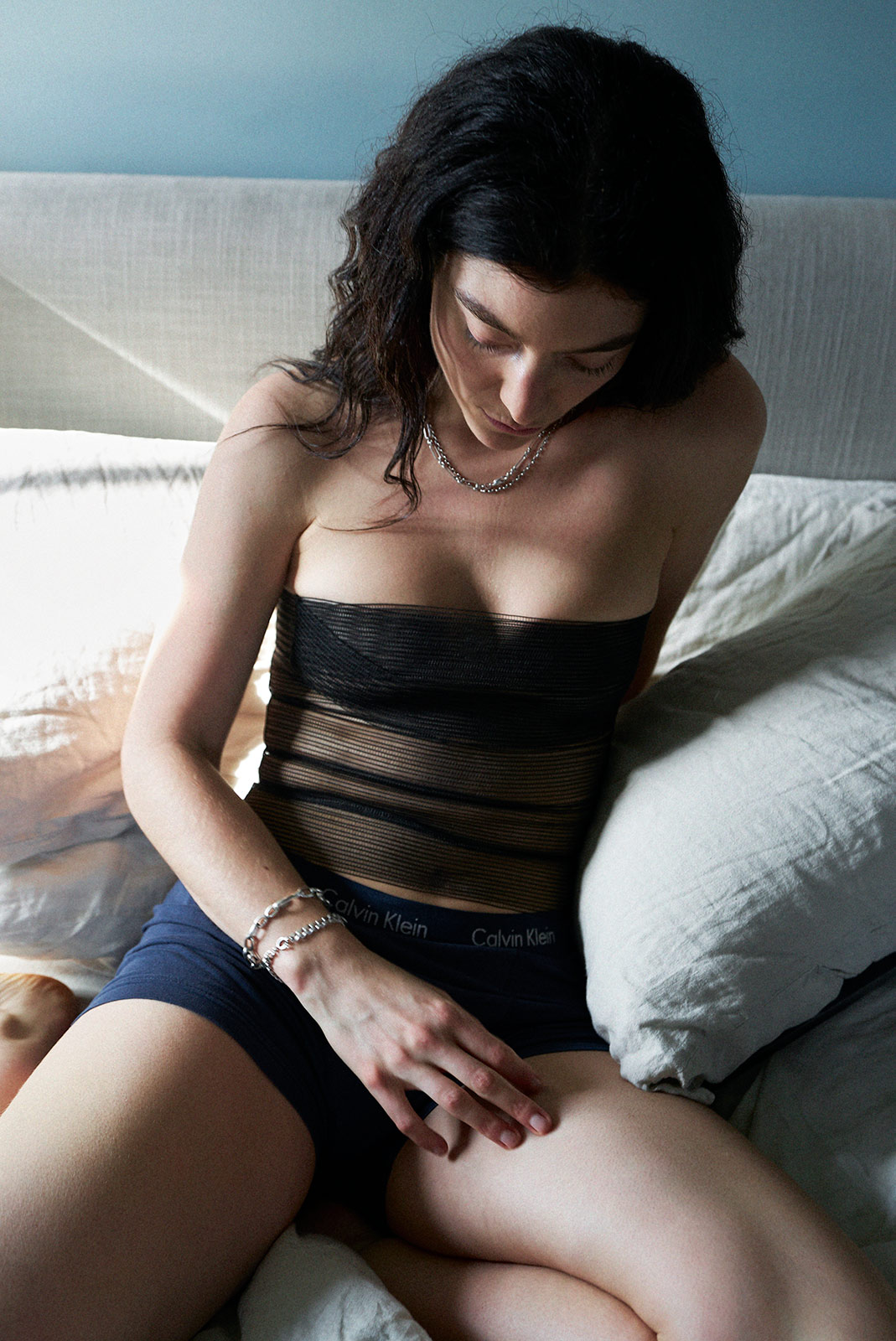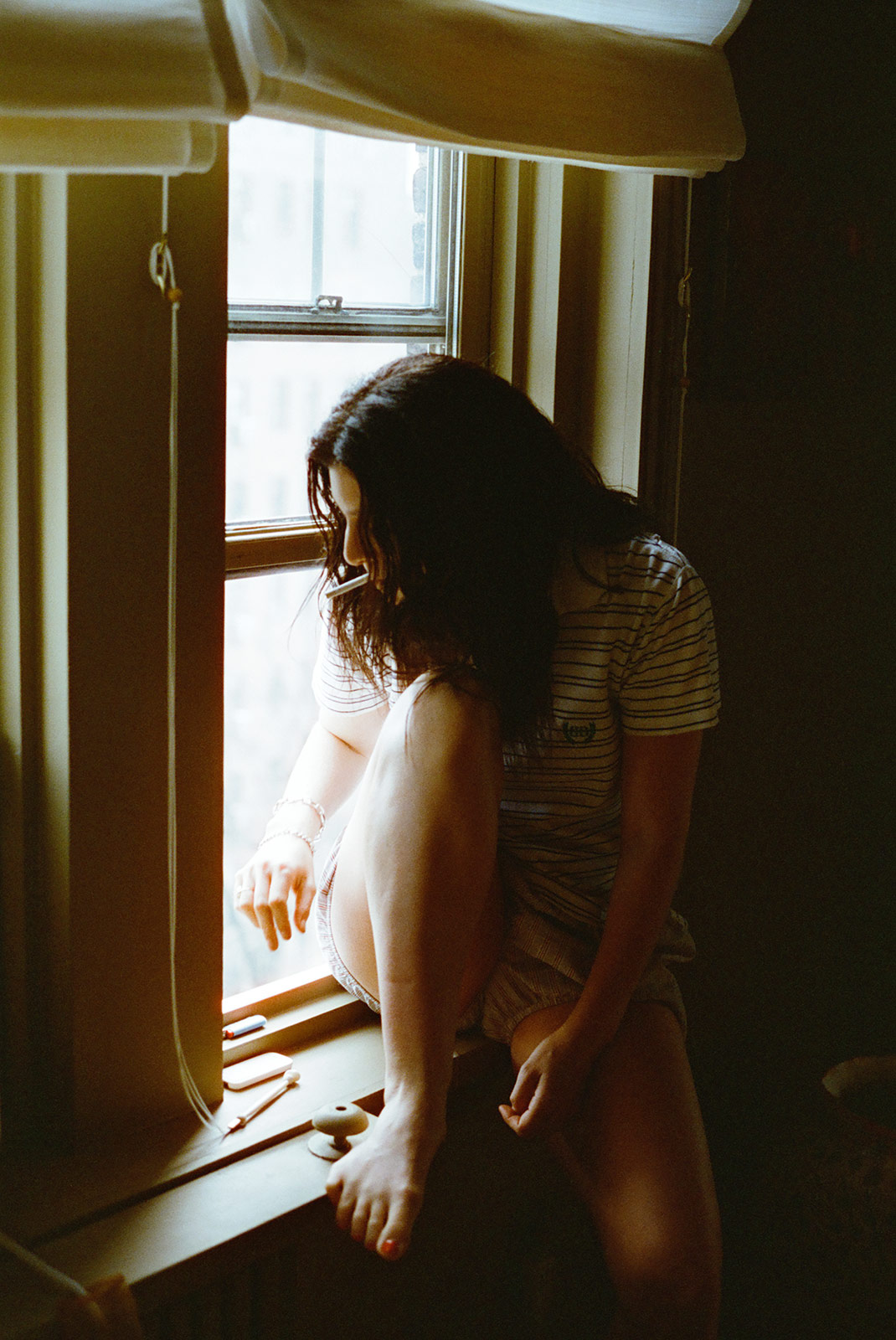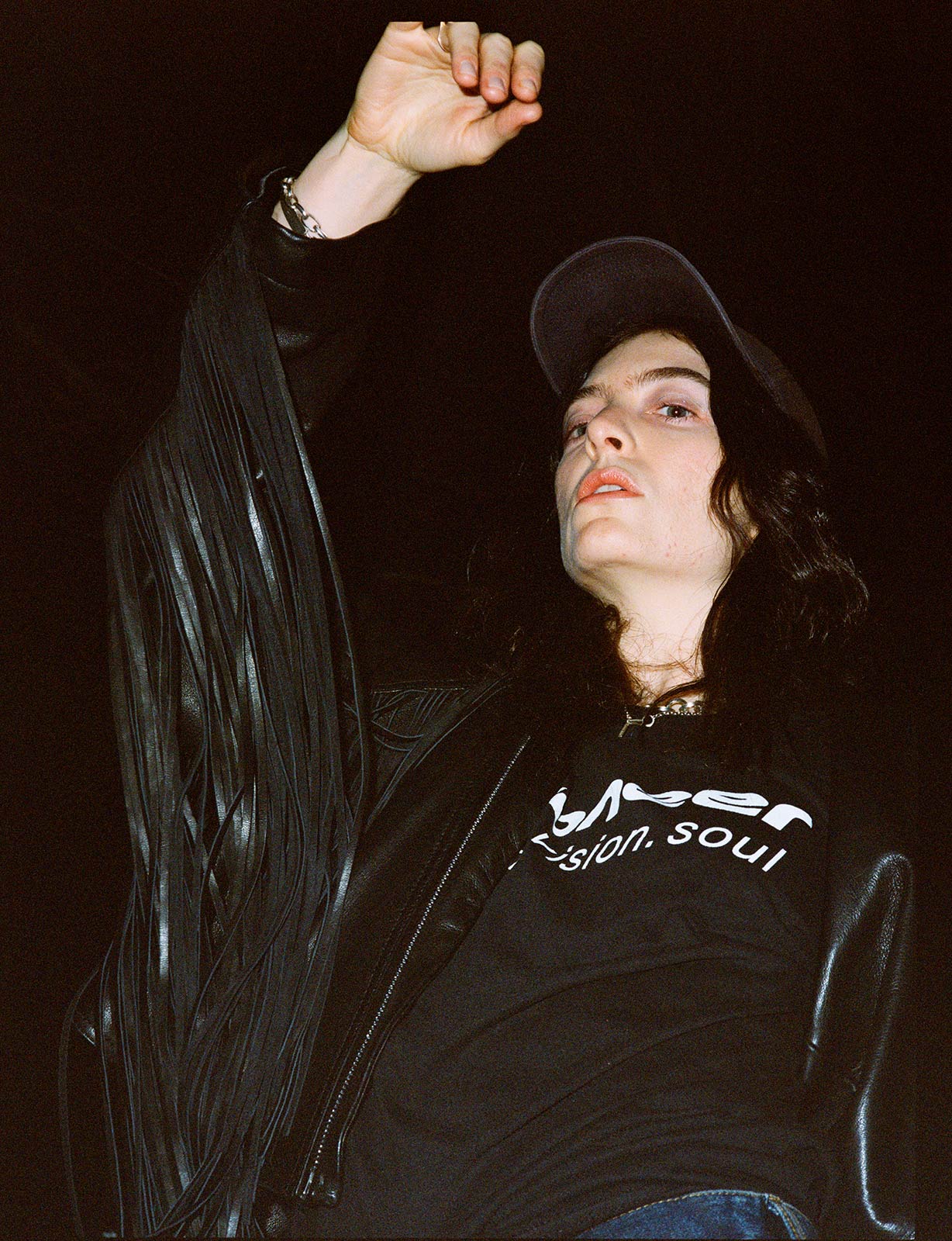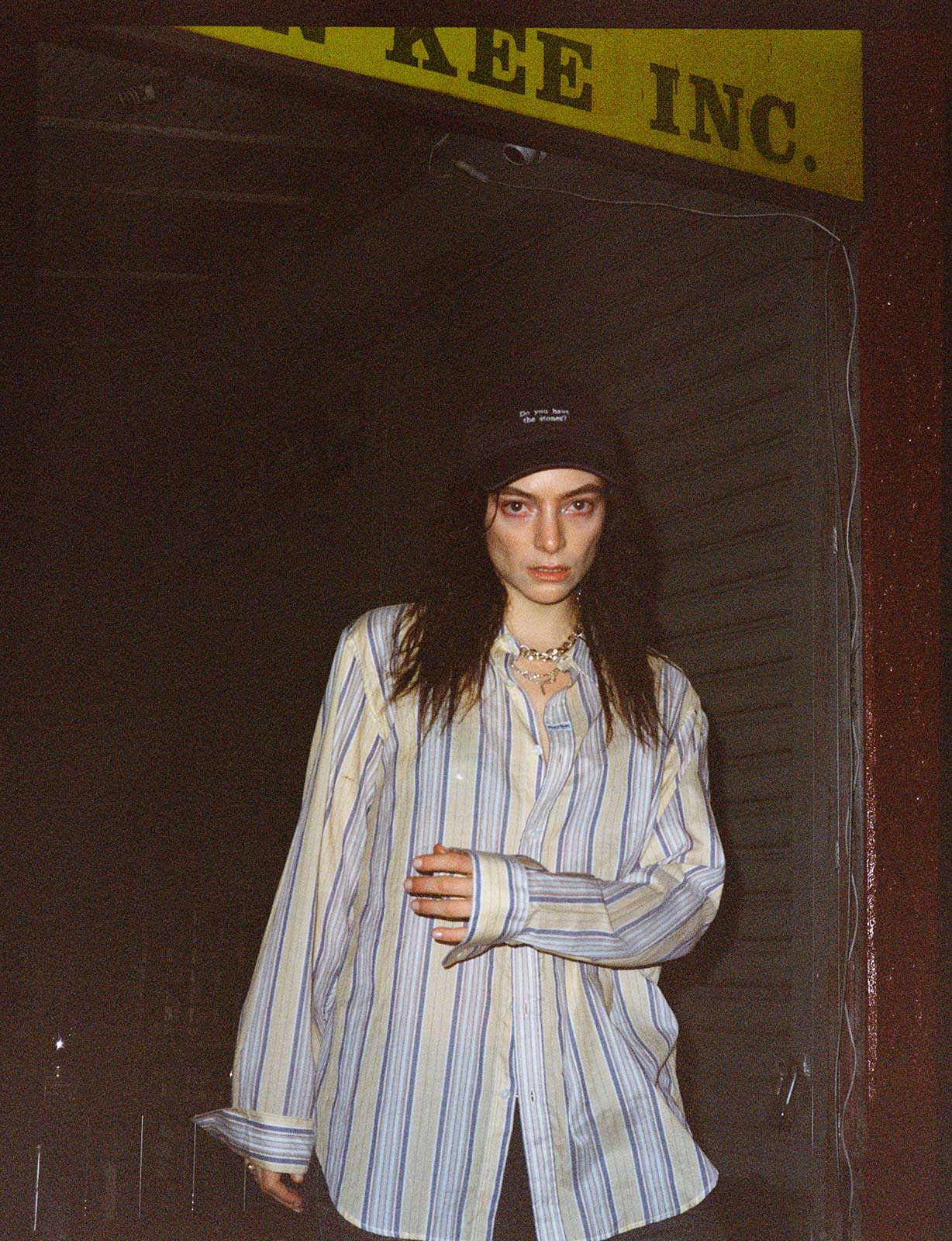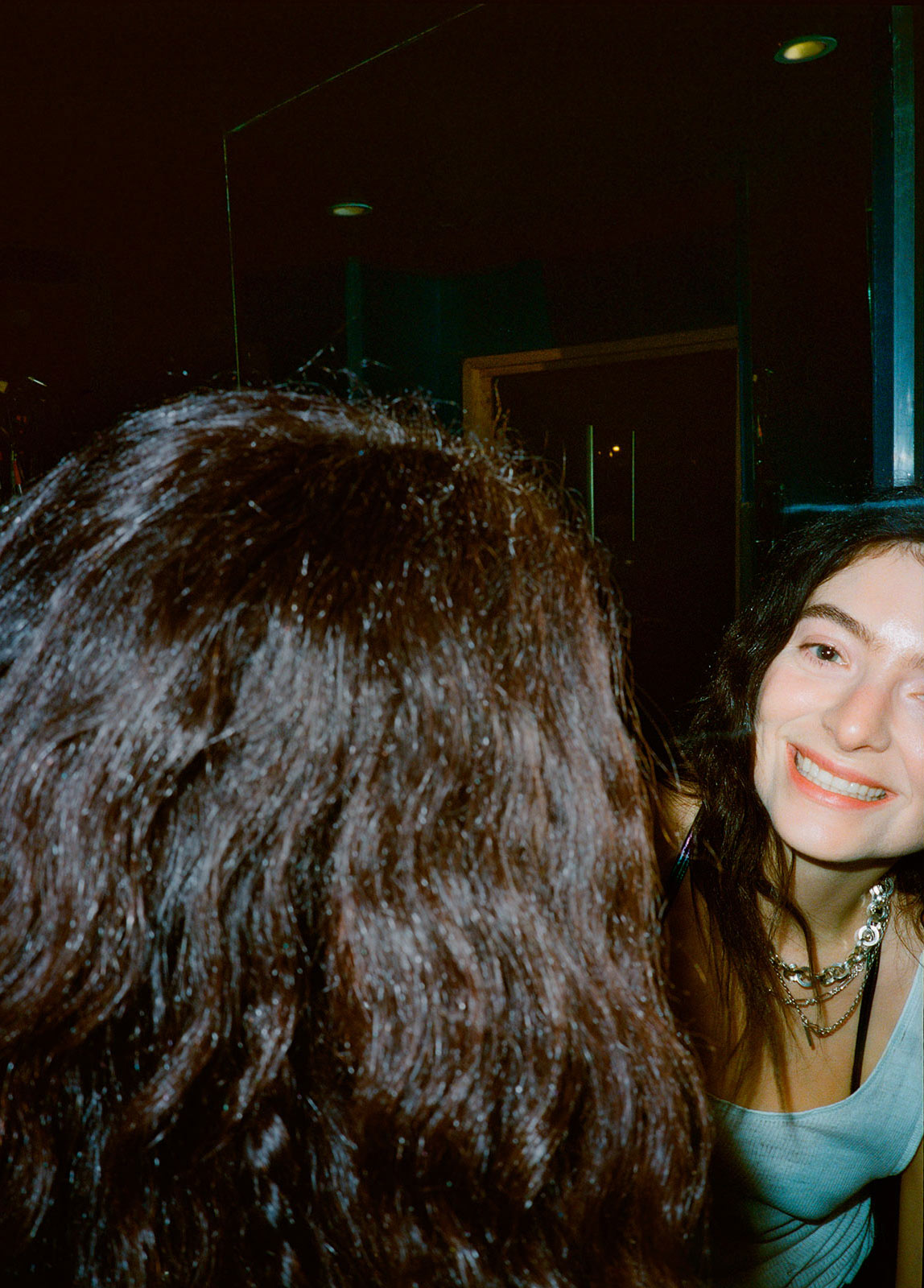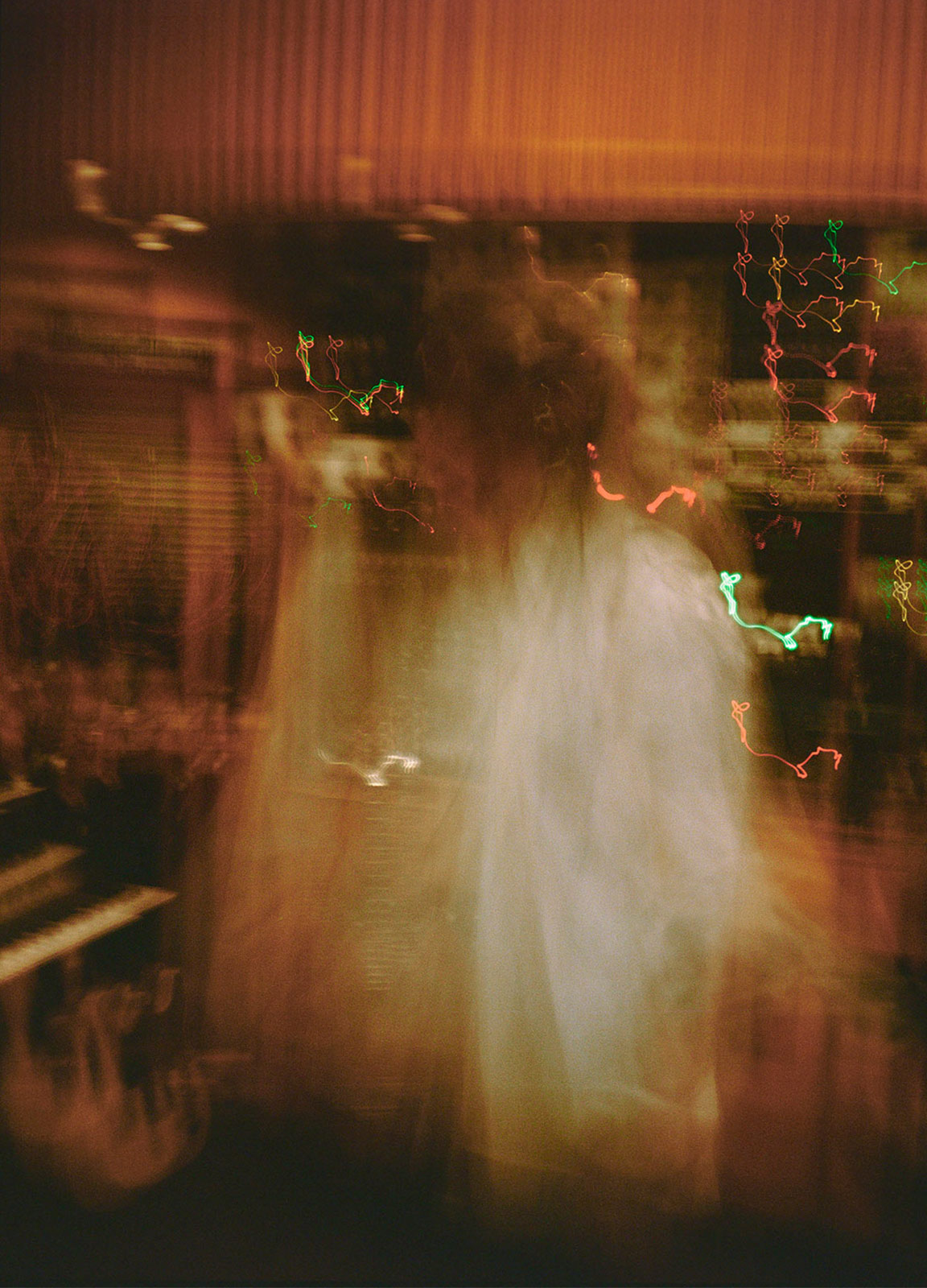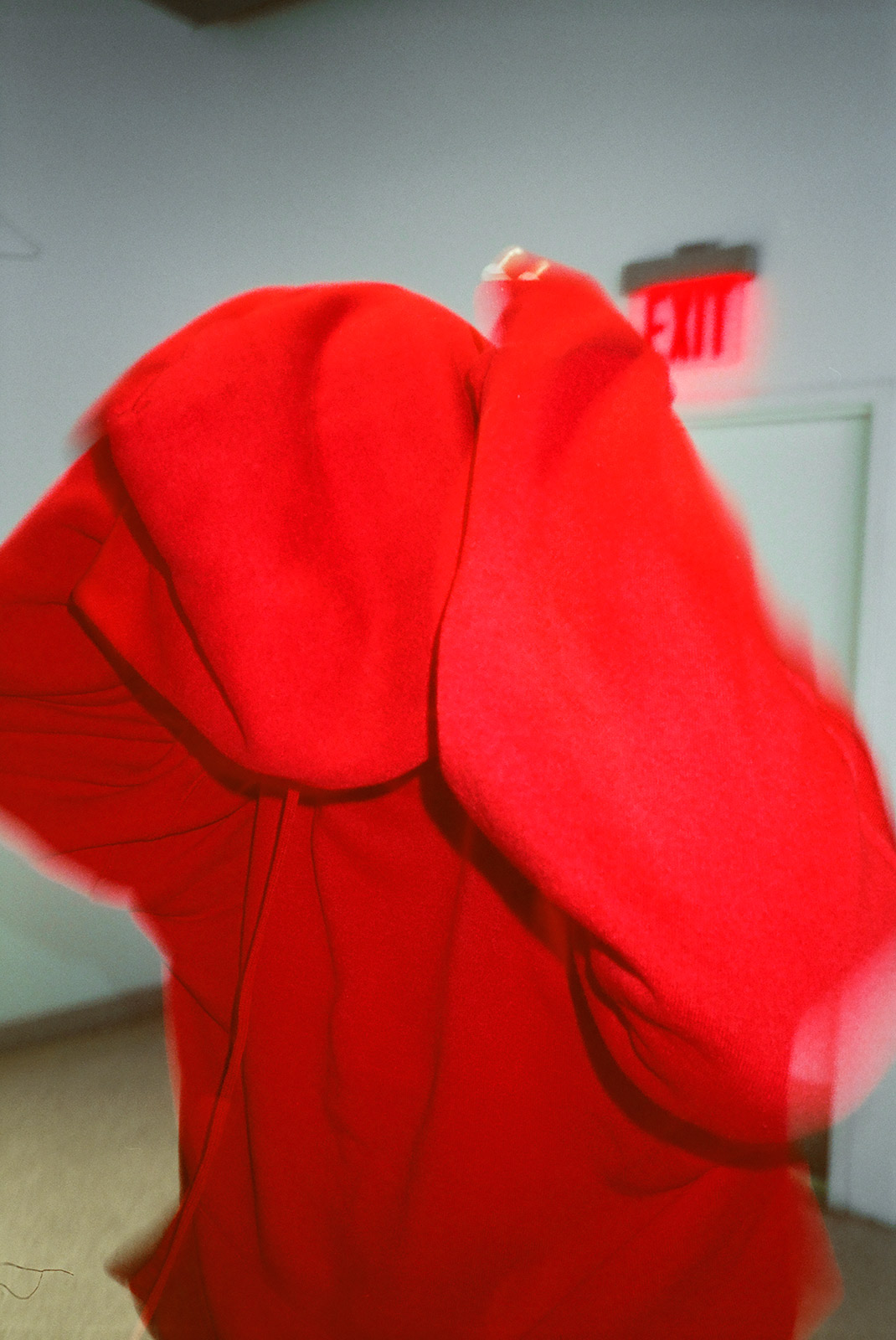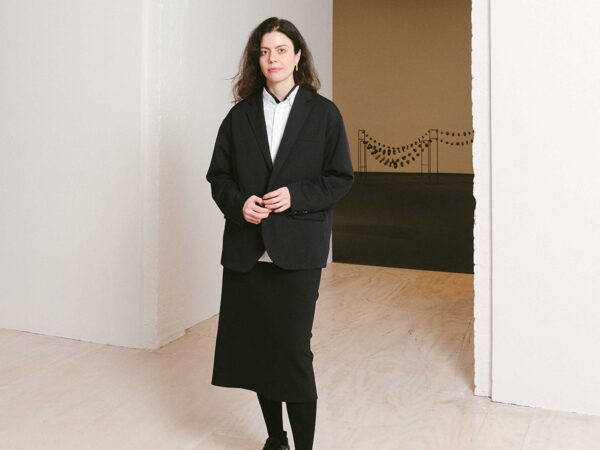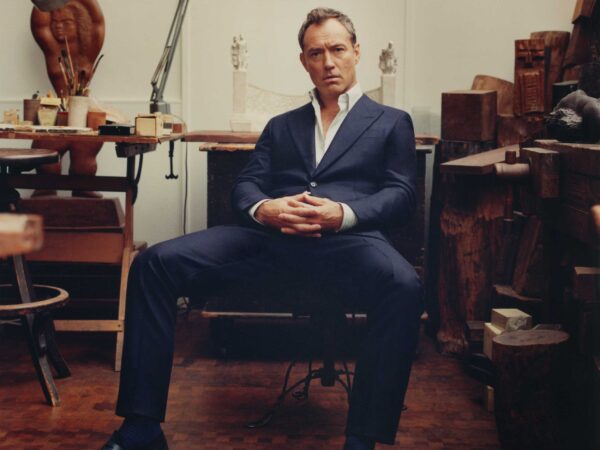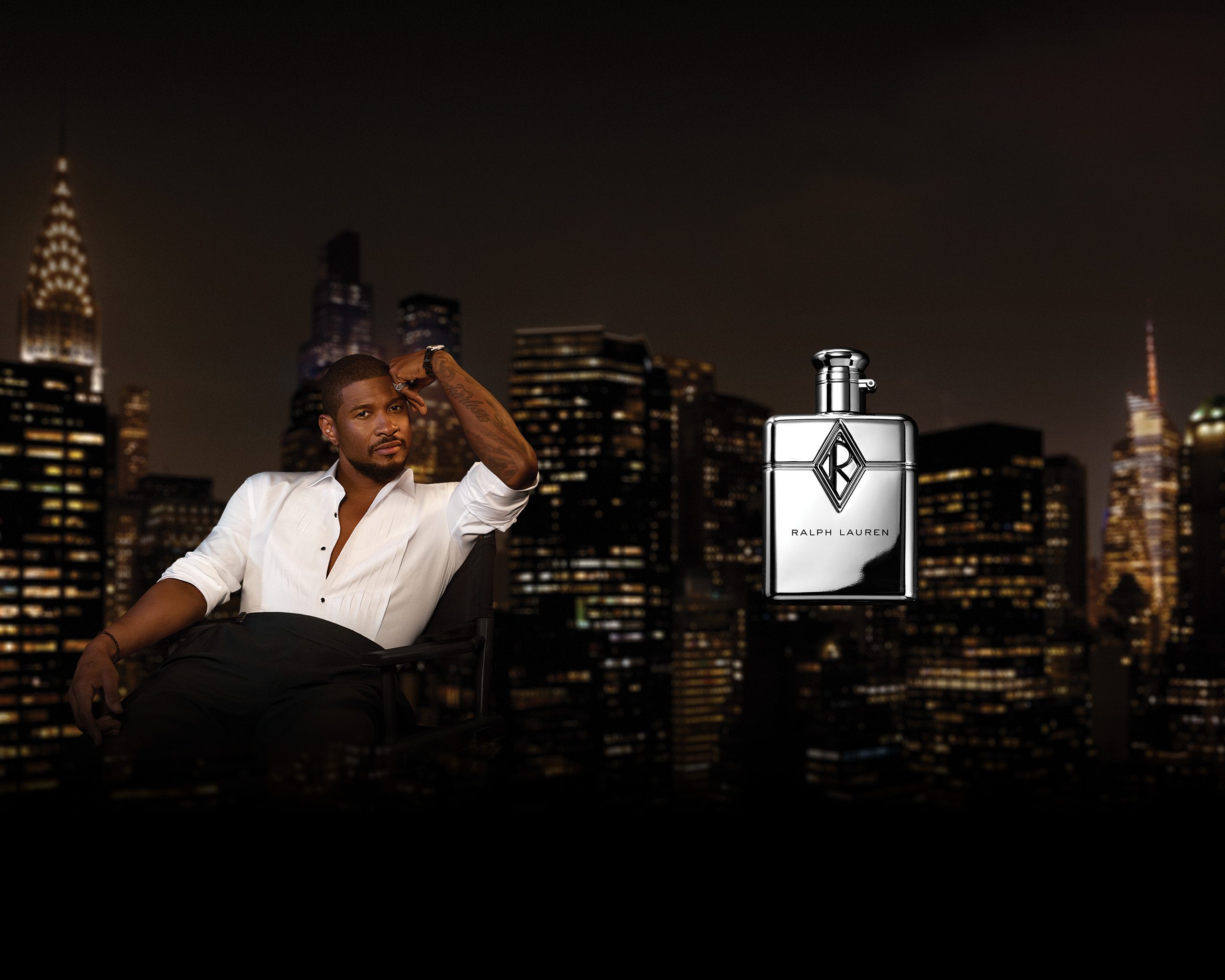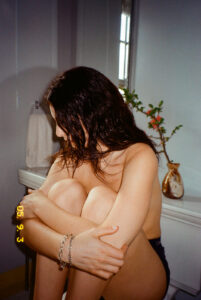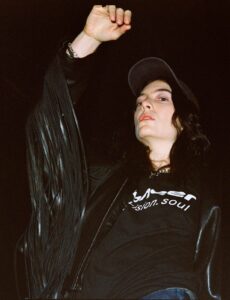
For Document's Spring/Summer 2025 issue, the musician and artist discuss 'Virgin,' finding their creative edge, and the importance of having the stones
On “Mood Ring,” the third single from her 2021 album Solar Power, Lorde sings, “I can’t feel a thing / I keep lookin’ at my mood ring / Tell me how I’m feelin’ / Floatin’ away, floatin’ away.” A kernel of personal honesty behind shimmering vocals and exacting satire of wellness culture—though Lorde is not the narrator of the song, it expresses the wispy, untethered nature of that point in her life. “I had made my body very small, because I thought that that was what you did as a woman and a woman on display,” she explains in the following conversation with her good friend, the multimedia artist and filmmaker Martine Syms. “It had the effect of making me [feel] totally ungrounded.” The four years between Solar Power and Lorde’s newly announced album Virgin (out June 27) have been a journey back to herself. Along the way she gathered tools—books, rituals, and objects (like the water bottle featured in her Instagram profile picture)—that she imbued with the spiritual weight to keep her centered through the dissolution of a seven-year relationship, a reexamination of her gender expression, and the reclamation of her body.
“I want to be more myself, my truest, most magnetic, freakiest self, with a gigantic purple aura around me. That is where the power is. But sometimes that vulnerability, it’s so uncomfortable,” Syms comments. “It’s actually okay to feel what you’re feeling, and to be sort of monstrous.” Known for her deadpan social commentary underpinned by an expansive knowledge of history, film, and mythology, Syms probes at the absurdity of the digital age, confronts casual and institutional racism, and explores the complex terrain of gender identity. She often locates universal truths in the specificity of her individual experiences, using herself or fictionalized representations of herself in projects like She Mad (2015–22), an episodic experimental sitcom that juxtaposes scenes featuring the semi-autobiographical character Martine with found footage, old film clips, and internet gifs. Her wry, hallucinatory film The African Desperate (2022) draws upon her time in Bard’s MFA program, as it follows Palace Bryant (Diamond Stingily), a Black MFA grad navigating art-world vacuousness and an impending sense of dislocation during her final hours on her predominantly white upstate art school campus.
In the aftermath of Lorde’s electric Coachella guest appearance alongside Charli XCX, and on the eve of her Washington Park performance of Virgin’s lead single “What Was That,” Syms and Lorde discussed finding empowerment through an intimate knowledge and unflinching acceptance of self. Sparked by questions from Document’s editor-in-chief Nick Vogelson, the two friends name the driving forces behind their creation and explore the evolutions of their artistic philosophies. Together, the images of Lorde by Syms—taken in both public and private locations in New York City—and their subsequent conversation form a portrait of a woman in the final stages of rebirth: spiritually fortified, embodied, and open to the world again.
Martine Syms: We should pretend it’s 4/20.
Lorde: [Laughs] That’s so us. We need it. That’s our full moon. I got way too stoned on 4/19 and had a crazy stone-over for 4/20.
Martine: Then the magazine can give the story a crazy title, like ‘The Lorde Has Risen.’ Also, you have the lyric in Solar Power, ‘I’m kinda like a prettier Jesus.’ The theme is 4/20 Easter.
Lorde: I know you to be someone who is super into astrology, but also in that interview in Total, I remember you talking about cosmology and ontology, and I really responded to that. From when I first connected with your work, the thing that struck me was this feeling of the interruption or the slippage. This feeling that you were allowing humanity to sort of bust through. It worked so effectively. It was so immediate, what it did to my body. Then digging in a bit more and realizing that you have such a deep spiritual framework, either supporting or on top of your practice. There’s just such a richness and a depth as it pertains to spirituality.
Has that always felt like a framework to your practice? Is that something that you developed over time? You’ve shown me that you have all of your friends’ charts really dialed in.
Martine: I’ve grown into it over time. I was raised in the church; I hated it, but I was always really into the mythology. We share this interest in mythologizing, whether that’s of the self, in an encounter, in the visual storytelling, or how it can feel. When I was a kid, I had a lot of nightmares about the devil, but I knew I was generating them. I was definitely the girl in middle school reading everyone’s horoscopes, and the person in my family who asked about everyone’s dreams in the morning, because I’ve always had powerful, visceral dreams from a young age. Now I’m in my mystic phase. In the past, I was more like, my spirituality is over here, and my art’s over here. Letting them actually intertwine has been fun.
“I feel like I found spirituality quite young through performance, because I could feel what was moving through me”
I’m always reading about psychoanalysis. Last year, I was reading this book The Night in Gethsemane, which is basically when Jesus encounters the devil—or himself. The devil’s not explicit. The devil is yourself. It’s like a point of no compromise, where you are like, Okay I’m open to the transformation. I think you had on your Instagram: ‘The themes are always the same, a return to innocence, the mysteries of the blood, an itch for the transcendental.’ I was curious what that meant to you and about your own encounters with yourself slash devil.
Lorde: Because I didn’t grow up in the church or anything like that, I was sort of scared of churches. I feel like I found spirituality quite young through performance, because I could feel what was moving through me, and there was a very obvious connection to the spiritual. But I don’t know about star signs. I don’t know any charts. I don’t have much of a framework on that level. It’s one of those things that has always been part of me, and I just continue to pull away layers that would have obscured it previously.
It’s funny thinking about that in my Instagram bio, which is a bastardization of a quote from Slouching Towards Bethlehem, talking about that counterculture. The words themselves—I was like, oh, that’s exactly it. That’s my mission statement. I put that in my Instagram bio around the time when I made Melodrama, which was 2017, and I haven’t been able to change it yet. For this album, when I sort of blacked out everything, I was like, the bio stays, because those things are always the same. Underpinning my work with this idea of purpose or duty, and connection to something outside of myself, and trying to be in conversation with my ancestors (make them laugh or sigh or be allowed to let something release in them), it all got a lot simpler, and it gave me direction. It was way easier to make choices when I could put my work somewhere slightly outside of myself.
I just love these things that start off as, like, an Instagram bio, and then become a part of your journey as an artist. We had that on this album—we were working in the East Village, and we walked past this flyer. I think it was for joining a band or something, and it said, ‘Do you have the stones?’ And I was like, ‘Whoa, that’s tight.’ I didn’t understand what it was saying at first. I know now it’s like, do you think you have the balls? But it gave me this feeling that there was a mysticism to it. ‘The stones’ felt like, do you have the sort of touchstones or the talismans to go there? Seeing that as I was also coming into my masculinity a bit more as well. That became the thing we would say to each other while making music. When there was a crossroads where we’d want to take it there but we were scared, we’d be like, ‘Do we have the stones?’ And then we wrote it into a lyric, and I got it on a hat.
Martine: It is a good question: Do you have the stones? However you take it to mean—runes, or fire, or time. Do you have the stones, the weight, for whatever the thing is that you’re doing?
Lorde: Another one that we had making this album was ‘the magic lives close to the edge.’ Because sometimes making stuff, as I’m sure you’re familiar with, you’re like, Whoa. I’m so alive in this, but I feel the presence of real danger, of risk. I was wondering about when you feel that edge or that sort of max aliveness. Because we’ve talked about the book that you did with Climax, and how, in letting go, something was able to come together about your work.
Martine: The edge. In general, I’m quite an intense person, so I feel like part of the journey has actually been realizing I don’t have to be right on it all the fucking time. You can take two steps back, babe. Whenever I think about making artwork or making a show, I’m always thinking about what’s at stake. And that thing can be really personal and small. It doesn’t have to be a huge exposure or revelation. It can be something that’s just at stake for me. In some pieces, it has been using my voice. In some pieces, like that Climax book, Pictures, it was letting them put in images that are quite personal, or that I don’t think of as artwork. To let that be a part of it. Or what is unique about my own voice, whether it’s a kind of rawness, there’s a kind of sexuality to it, an aliveness that always needs to be present to me. And then, whatever the encounter is. How I touch the world. That’s where the edge is for me. Intensity is one part, but as I’ve gotten older, I’ve seen it’s not even the most important part. It’s just knowing that something is at stake. If I don’t feel that, then I’m kind of not in it.
Lorde: It’s literally that simple, just being like, what’s at stake?
Martine: I love the edge. I love a weird scene. I love to get into it.
But talking about performance, you just had the biggest one in a while at Coachella. How does it feel to be back in front of all those people? How does it feel to be starting to release music again? I feel like, in some ways, this moment is a little bit the scariest.
“This album is a byproduct of that process of fully coming into my body and feeling the fullness of my power.”
Lorde: I describe it as ‘the portal is open,’ because when I start to show people something I’m making, and before they hear it fully, it’s a zone where you really need to be on your guard, spiritually. I’m creating the force field every day. It’s been four years since my last album came out, and the last one, I was going through a lot. I think as artists, we were metabolizing a lot. Summer of 2021, there was this feeling of, ‘Okay, we’re back out here, and everything’s totally fine!’—and it was just so not the case. It was all still really in process, and there would be these layers of grief that would come through, and there was such a collective anger, and so much trauma coming to the surface. Then on top of that, I had made my body very small, because I thought that that was what you did as a woman and a woman on display. I thought, I’m small. This will communicate to people that I’m taking my position seriously. It had the effect of making me [feel] totally ungrounded. I was very weak. I look back now, and I don’t have that same feeling of floating away. I eat as much as I want and need now. I wasn’t very embodied. And it totally makes sense to me; like most of the shit [album-making], I was just doing on my computer. We’re doing this [album] that way, but we got to be together, take pictures, and meet for breakfast or whatever.
Martine: Spend time together.
Lorde: That was honestly the biggest goal for me of this new record. It was like, I’m not going to put anything out until I’m in my body the way I know I’m supposed to be, to be able to do my work. That’s all I did the last four years, basically. This album is a byproduct of that process of fully coming into my body and feeling the fullness of my power. It’s cool to be back in that place of, like, the portal opening and the weight. I’m myself. All these parts of me are represented in a bunch of different ways. I’m not hiding from myself. I’m not stealing from myself. I often would think about not eating very much as I felt like every bite of food I had was stolen. I was like, hang on, this has gotten weird. But to be out on stage at Coachella, I had this feeling of like, you know, your first day of middle school, [when] you’re like, this is a sick outfit, I love my outfit so much.
Martine: I did love your outfit.
Lorde: Thank you! I bought these pants on eBay; I was obsessed with them. I just felt so like myself. Charli [XCX] was playing, and I just walked out into the grass, and was like, this is it. This is everything you could dream that your work would feel like, getting to do this with a homie. That whole group is so cool. It was good to encounter them last year, because through watching Charli and hanging out with her, I saw how, yes, we’ve got a job to do, but it also has to be fun, and we have to all be connected and having these special moments that no one can see. It was cool to hang with them and just all be sitting in the grass afterward and eating bad pizza.
Martine: When I was watching the performance, I was thinking about how self-possessed you looked on stage. You looked like yourself. I was thinking about all the things you’ve done to have access to your self. Because even listening to the album and all the conversations we’ve had around it, you say this explicitly in ‘What Was That,’ ‘I try to let whatever has to pass through me pass through.’ You have to go through a gate to become more like yourself. To see you guys next to each other, I was like, these are two really strong, powerful people who are also both hot and talented and having fun, getting to be themselves in a way that probably wasn’t possible 20 years ago.
Lorde: I don’t think it was possible even 10 years ago; I just think things have changed so much. We are just in this cool moment in pop culture where it feels like this room for your humanity or being yourself is a little bit more prized. That’s all I’m trying to do at the moment. I read this book at the start of making this album, I’ll send it if you haven’t read it. It’s called Animal Joy by Nuar Alsadir.
Martine: I literally just got it.
Lorde: That’s so sick. She asked her daughter, who’s very young at this point, what does beautiful mean to you? And her daughter says, ‘most self.’ It really is just about being the most You possible, and trusting that that’s beautiful because it’s inherently going to be really alive. That’s been my mission, but it came out of many years of putting something on and being like, what am I doing wearing this? Like, who am I? What set have I stepped onto right now? You must have come up against all sorts of stuff like this, but I feel like it must be amazing that your domain is all yours. That somebody gives you a pavilion or a room in a gallery, and it’s like, the space is completely open. But then, I’m sure that what comes along with that is all sorts of like, ‘be yourself, but in this way that is prescribed by us.’ Especially as a Black woman.
Martine: Yes. I also have to create the force field every day. I trust my gut, and I’m very like yes, no, yes, no. But I worked on a project last year that was a no, that I really wanted to be a yes. It became clear that the people I was working with had an idea of who I was and what I was like, but they weren’t that into what I am actually like. Obviously, you know it on a much bigger level than I know it, but people just have an idea of who you are, and they’re like, ‘I love that idea so much.’ But sometimes they like the idea better than the actual person.
I love that, that beauty is being more self. I want to be more myself, my truest, most magnetic, freakiest self, with a gigantic purple aura around me. That is where the power is. But sometimes that vulnerability, it’s so uncomfortable. That’s something I’ve been reckoning with over the past year, just being okay in that space of discomfort, and being like, it’s a part of it. Especially just like in the world, in my personal life, moving through tons of discomfort this year. But it actually has become much easier, which is the gag. It’s actually okay to walk away. It’s actually okay to feel what you’re feeling and to be sort of monstrous.
Lorde: That’s sick, Martine, ‘sort of monstrous.’
Martine: It’s very real. All of last year, I had this kind of mantra, which was I want that God wants, which to me meant that I wasn’t going to fight, I wasn’t going to push or override. If the universe is flowing in a direction, I’m going to go in that direction instead of fighting it. This year, it has helped me be able to find peace in chaos, and also an acceptance of the chaos as a permanent state. Like, there’s not some special moment where everything gets perfect. I was curious, how have you found ways of riding those waves and finding peace, and what practices—I know we’re both big readers, and obviously love the home sanctuary, but what else?
Lorde: I have come to see modern life as this quest that requires tools and talismans and protective amulets. Being from where I’m from, I’ve had this feeling of rootlessness for a long time now. When I’m not at home, there is a part of me that is just aching, and my feet don’t feel like they’re on ground until they’re on home ground. I had to find a way for that not to be true, or for home to be where I am. I developed, in the last couple years, this sort of system. This is partly [from] moving to the city, because you have these things that you need to get through the day with your sanity intact. I think about headphones as this protective mechanism on multiple levels. It feels like this piece of, like, ancient headwear. I’ve also rubbed the same oil into my skin for three years now, and I can’t do it differently. Something about when I sort of seal up with this oil, I become myself. I also use manuka oil, which is from home—that connects me to there. I always have a piece of one of my grandmother’s jewelry on me. Having that jewelry and having framed photos of my ancestors in the home. There are funny things, like I take these cloths everywhere with me, and I’ll just drape some around a hotel room, and all of a sudden there’s a feeling—like when something old is in the room. I’m like, Okay, it’s not on me to be the grown-up, I’ve got this 150-year-old cloth that can be the grown-up for me. It’s as basic as my water bottle, which I bought completely on a whim in 2023, that became what I drank my water out of till now. Choosing this beautiful kind of ornament and making it a piece of a spiritual system, seeing this rainbow water bottle, and having that be part of my kit helped give me this feeling of groundedness. And it’s not lost on me that these are all things that show up in mythology. There’ll be the chalice and these sort of vessels. Like, it’s dumb, but it’s not. That is a big part of it for me.
Reading is huge for me. Psychedelic therapy, honestly, is a huge cornerstone to my well-being and practice and just keeps me alive to what’s out there and what’s possible. I’m obviously really fortunate not to have the genes of an addictive personality, but I remember first smoking weed as a teenager, and seeing my brain for what it was. If I hadn’t smoked weed, I don’t think I would be an artist.
Martine: Same, honestly.
Lorde: Truly, I was like, I get it, this is what I have buzzing around inside me.
It’s very open, for me, the process of making an album. I start by reading, and I don’t really know why I’m reading what I’m reading. This time, I read a lot about the body in different ways. I read a lot of queer writers. I just read all of Annie Ernaux. [I was] in London surrounded by books at random Airbnbs and in the spare rooms of my friends. I knew that I just had to give myself over to the mystery, and not really have a plan for it. Because I had always been like, ‘I’m going to make an album about this,’ and then I would go in that direction. I was like, that is not what this wants to be. But I feel like with these anchoring components, I was able to sit in that space of mystery. Sounds crazy, but if I hadn’t had that water bottle with me—that was the thing between me and going off the edge sometimes. [Laughs]
Martine: Water, very important. I also have been reading a lot of Annie Ernaux. The kind of sharpness and clarity of her voice—
Lorde: —and unsentimentality. I wanted a modern female voice that was still really emotional, but without sentiment. I wanted to see what was possible there. Rachel Cusk does that too.
Martine: There’s a Lydia Davis novel, The End of the Story, that does that. Also, I was reading a lot of Natalia Ginzburg.
Lorde: I love Natalia Ginzburg. Have you read Sweet Days of Discipline, that Fleur Jaeggy book? That’s kind of that buzz as well. I gave it to Dev [Hynes] actually, I wonder if he read it.
“I’ve spent a lot of my career making these objects that will last through time and be beautiful in perpetuity. I was like, ‘No, let this one degrade almost immediately.’”
Martine: He can pass it to me next. Can we talk music a little bit? Just before we talked, I saw a very cool TikTok where this girl mashed up ‘What Was That’ with ‘Supercut.’ It sounded fab.
Lorde: Oh, sick! I just love all this stuff, these amazing kids. ‘What Was That.’ We just started there because it’s the beginning. It was the first music of my rebirth that had come out of me, and I felt it start the day that we did that. I had come back from London to New York after this period of great turbulence in my personal life. Becoming single, but also really facing my body stuff head-on, and starting to feel my gender broadening a little bit. Just being back in my house and feeling this big wave of grief. I just kept thinking, What was all of that? Whether it was my seven-year relationship or a pandemic or sacrificing my body to my career since I was 16 or 17. This feeling of, Oh, my God, so much has moved through me. And there’s so much mystery and pain. I just held the mic and sort of walked around the room and said it all. I didn’t write anything down, which was cool.
Then the video, all I said making it was just like, max aliveness. And it definitely has that feeling. We shot two-thirds of this video, which is me moving through the city, and I go up through a tunnel and pop out of a manhole in Washington Square Park. Tomorrow night, I’m going to tell people to come to the park, and I’m going to play them a song, and we’re going to be filming that, and then we’ll go straight to the edit, put that into the video, and then the video comes out the next day. It doesn’t even look that good. I mean, your work looks so fucking good, but there’s this confidence in the fact that the aliveness is what’s going to make it look good, not necessarily needing to grip super tightly to a way of producing this end result, or whatever. This video was made to degrade. I’ve spent a lot of my career making these objects that will last through time and be beautiful in perpetuity. I was like, ‘No, let this one degrade almost immediately.’ It is a risk. But it feels like where I’m meant to be, and if people don’t get it, it’s all good.
Martine: I’ve been really on my Dogme 95, and this is giving Dogme 95. I’ve been revisiting that way of making stuff like you’re saying, where it’s like, let the spirit of it carry it. What was that?! Like, what the fuck? I know that feeling so well, in all these different situations you’re talking about, where you are just like, what was that? I don’t know what just happened. It could be a relationship. It could be with a project. Once you’re on the other side of something, you’re just like, Okay, what? Also, to your point, between Solar Power and now, all the things that have happened in the last few years, people are kind of like, Wait, what was what? All these life changes and transformations that have happened. There was something you said when we first met that has really stuck with me; I’m gonna bastardize the way you said it, you said it so eloquently—but it was kind of like ‘not being too clever.’
Lorde: Avoiding prowess.
Martine: Yeah! Avoiding prowess. When you said it to me, it hit me right when I needed to hear it. Like, yes, you have a skill set. And yes, you know how to do this thing. And there’s a way and a process you’ve been doing it. But even just how you’re describing the video, you could have made this cinematic thing, but it closes it down in some ways. What you’ve made generates everything that’s going to come.
Lorde: I hope so. [Laughs] This was another one of my big tenets, to avoid prowess wherever possible. Everyone’s good at everything, and I kind of don’t care. Show me what it looks like when you are bad. Show me how it looks when you get it wrong. It feels like that’s what’s at stake to me. Trust they know you’re smart and that you know how to do things, and that working in these simpler or more spontaneous or more naive-feeling forms is going to do something interesting.
Creative Direction Thistle Brown. Hair Junya Nakashima at Streeters. Make-up Maud Laceppe at Home Agency. Photo Assistant Obi Russon. Production Penny Projects. Executive Producer Kalena Yiaueki at Penny Projects. Production Coordinator Jansan Pierre at Penny Projects. Production Director Lisa Olsson Hjerpe. Special thanks Huxley.

